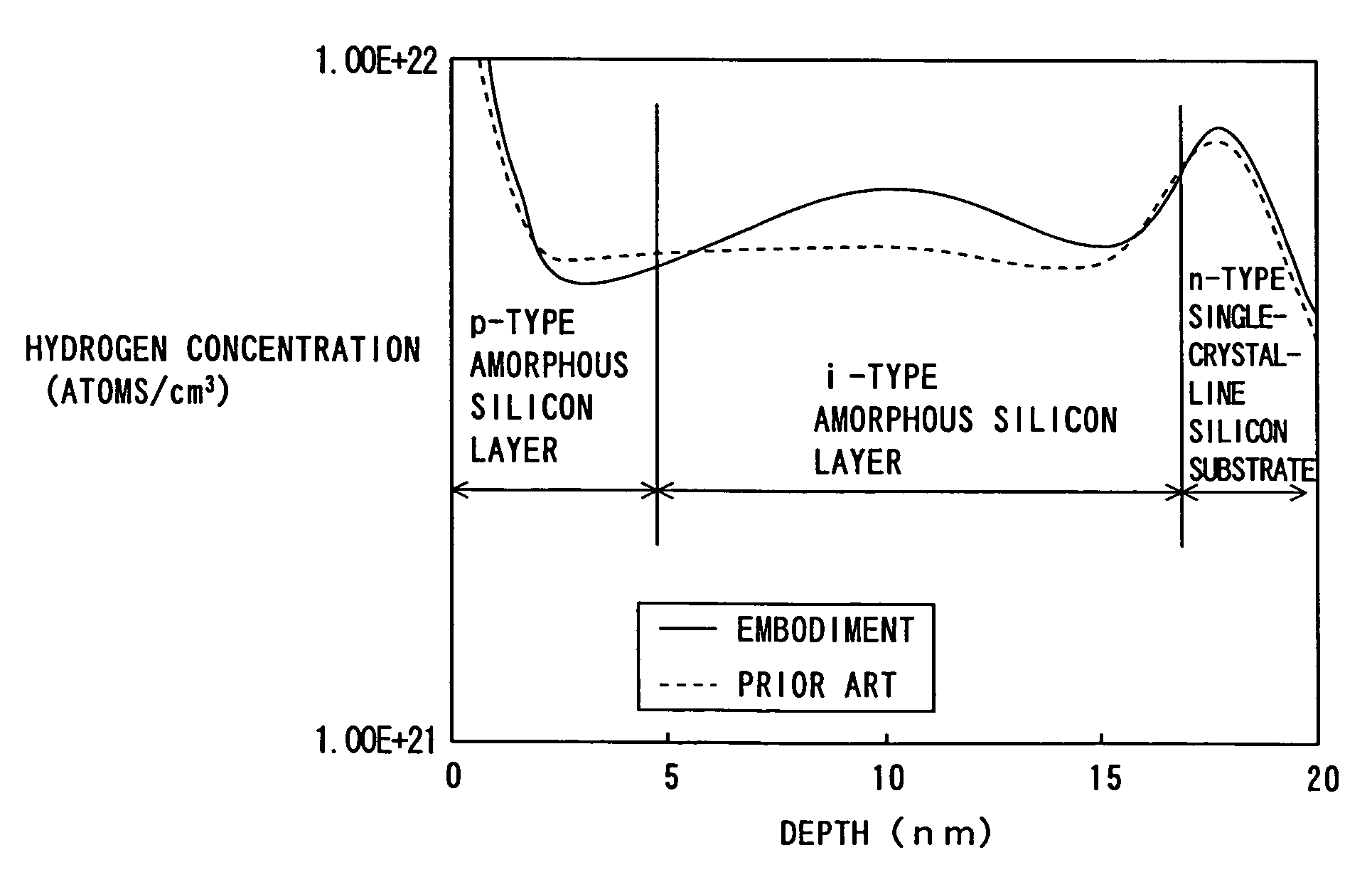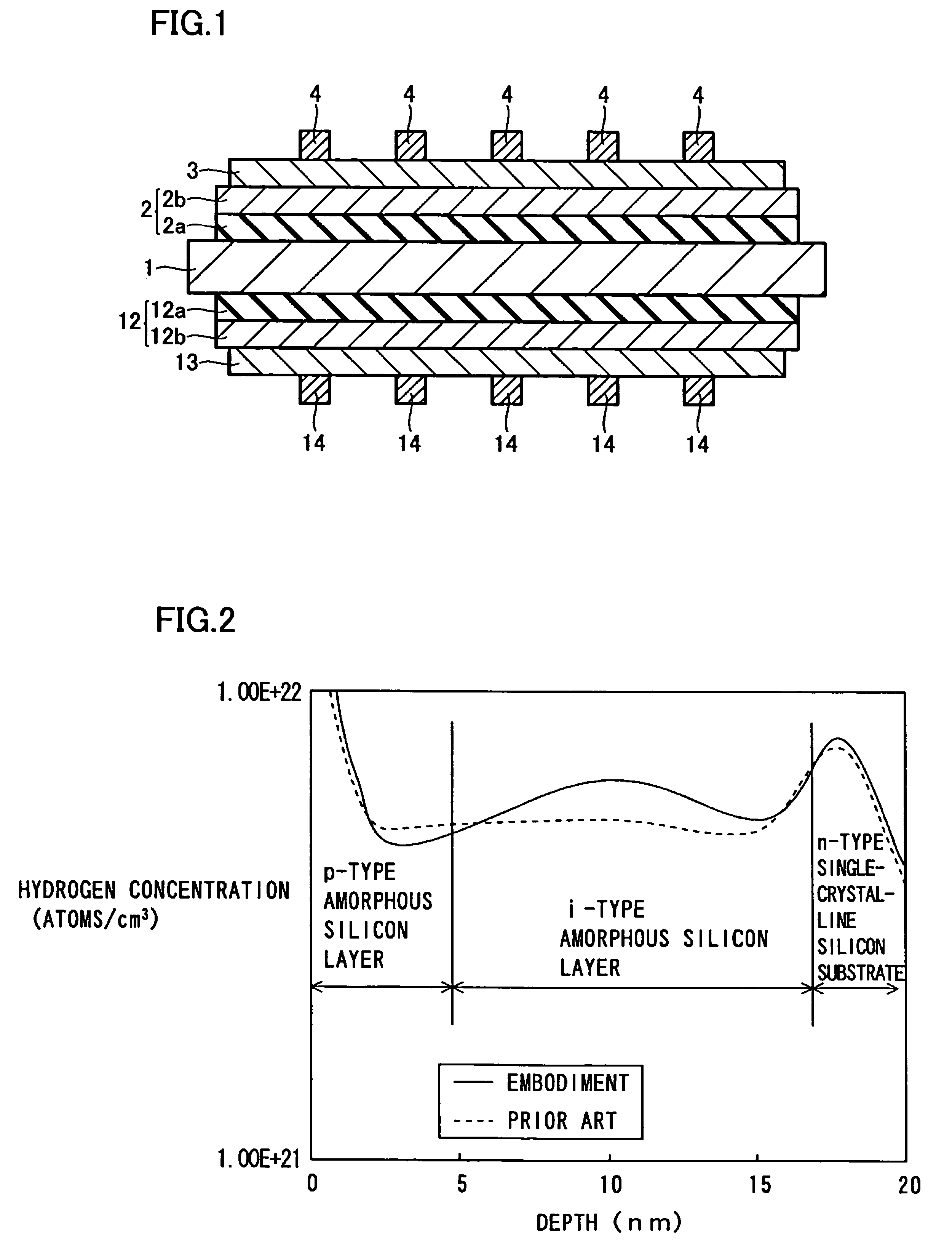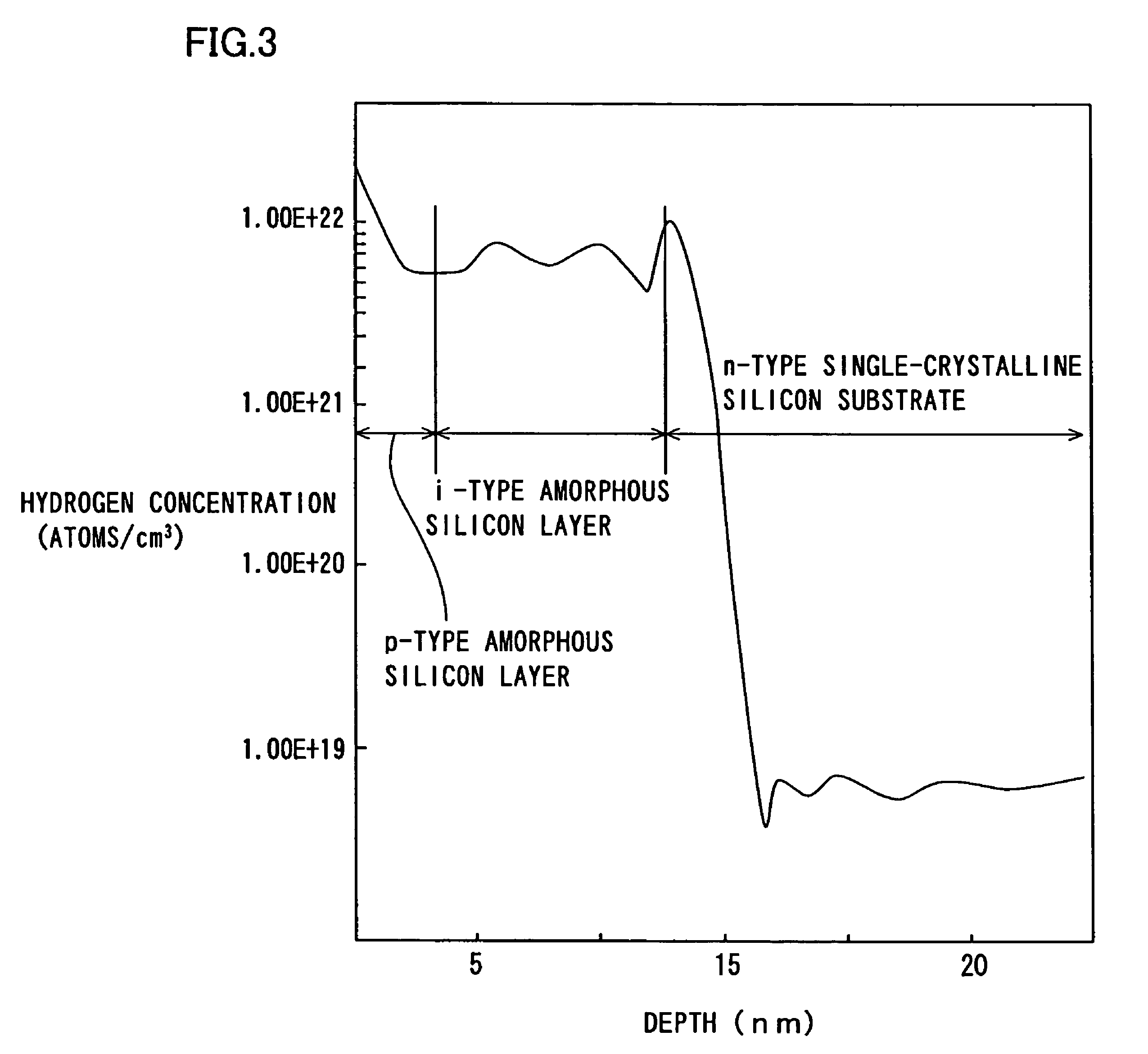Photovoltaic device
a photovoltaic device and photovoltaic technology, applied in the direction of semiconductor/solid-state device details, radiation control devices, instruments, etc., can solve the problems of disadvantageously difficult to improve the output characteristics of the photovoltaic device, and no sufficient countermeasure for suppressing the recombination of carriers, etc., to achieve the effect of improving the output characteristics
- Summary
- Abstract
- Description
- Claims
- Application Information
AI Technical Summary
Benefits of technology
Problems solved by technology
Method used
Image
Examples
Embodiment Construction
[0035]An embodiment of the present invention is now described with reference to the drawings.
[0036]The structure of a photovoltaic device according to the embodiment is described with reference to FIG. 1.
[0037]In the photovoltaic device according to the embodiment, an amorphous silicon layer 2, a front electrode 3 of ITO (indium tin oxide) having a thickness of about 70 nm to about 100 nm and a collector 4 of silver having a thickness of several 10 μm are successively formed on the upper surface of a hydrotreated single-crystalline silicon substrate 1, as shown in FIG. 1. The amorphous silicon layer 2 is constituted of a substantially intrinsic i-type amorphous silicon layer 2a having a small thickness of about 9 nm to about 13 nm formed on the upper surface of the n-type single-crystalline silicon substrate 1 and a p-type amorphous silicon layer 2b, doped with boron (B), having a thickness of about 2 nm to about 5 nm formed on the i-type amorphous silicon layer 2a. The i-type amorp...
PUM
| Property | Measurement | Unit |
|---|---|---|
| thickness | aaaaa | aaaaa |
| thickness | aaaaa | aaaaa |
| thickness | aaaaa | aaaaa |
Abstract
Description
Claims
Application Information
 Login to View More
Login to View More - R&D
- Intellectual Property
- Life Sciences
- Materials
- Tech Scout
- Unparalleled Data Quality
- Higher Quality Content
- 60% Fewer Hallucinations
Browse by: Latest US Patents, China's latest patents, Technical Efficacy Thesaurus, Application Domain, Technology Topic, Popular Technical Reports.
© 2025 PatSnap. All rights reserved.Legal|Privacy policy|Modern Slavery Act Transparency Statement|Sitemap|About US| Contact US: help@patsnap.com



